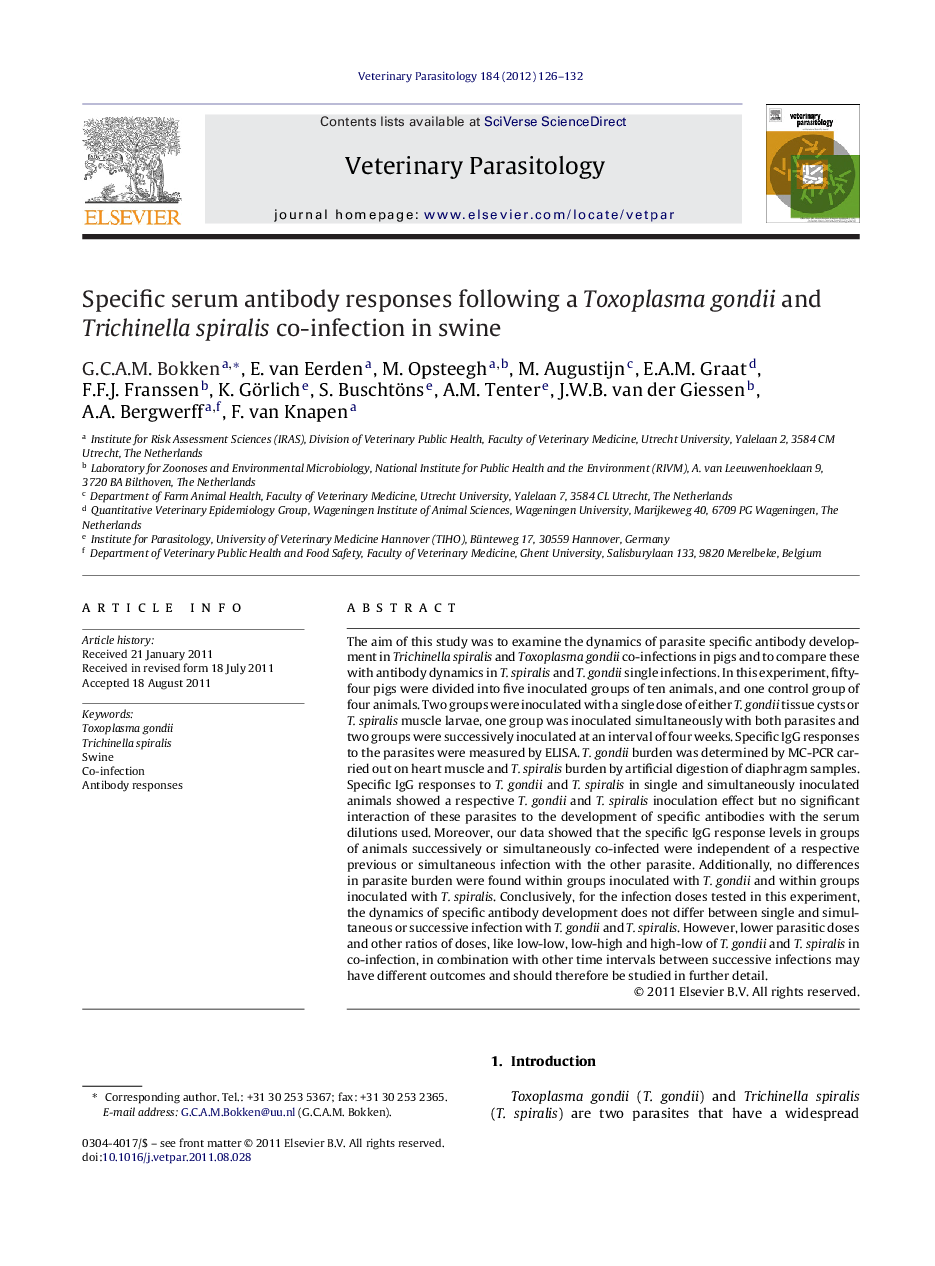| Article ID | Journal | Published Year | Pages | File Type |
|---|---|---|---|---|
| 5805335 | Veterinary Parasitology | 2012 | 7 Pages |
The aim of this study was to examine the dynamics of parasite specific antibody development in Trichinella spiralis and Toxoplasma gondii co-infections in pigs and to compare these with antibody dynamics in T. spiralis and T. gondii single infections. In this experiment, fifty-four pigs were divided into five inoculated groups of ten animals, and one control group of four animals. Two groups were inoculated with a single dose of either T. gondii tissue cysts or T. spiralis muscle larvae, one group was inoculated simultaneously with both parasites and two groups were successively inoculated at an interval of four weeks. Specific IgG responses to the parasites were measured by ELISA. T. gondii burden was determined by MC-PCR carried out on heart muscle and T. spiralis burden by artificial digestion of diaphragm samples. Specific IgG responses to T. gondii and T. spiralis in single and simultaneously inoculated animals showed a respective T. gondii and T. spiralis inoculation effect but no significant interaction of these parasites to the development of specific antibodies with the serum dilutions used. Moreover, our data showed that the specific IgG response levels in groups of animals successively or simultaneously co-infected were independent of a respective previous or simultaneous infection with the other parasite. Additionally, no differences in parasite burden were found within groups inoculated with T. gondii and within groups inoculated with T. spiralis. Conclusively, for the infection doses tested in this experiment, the dynamics of specific antibody development does not differ between single and simultaneous or successive infection with T. gondii and T. spiralis. However, lower parasitic doses and other ratios of doses, like low-low, low-high and high-low of T. gondii and T. spiralis in co-infection, in combination with other time intervals between successive infections may have different outcomes and should therefore be studied in further detail.
